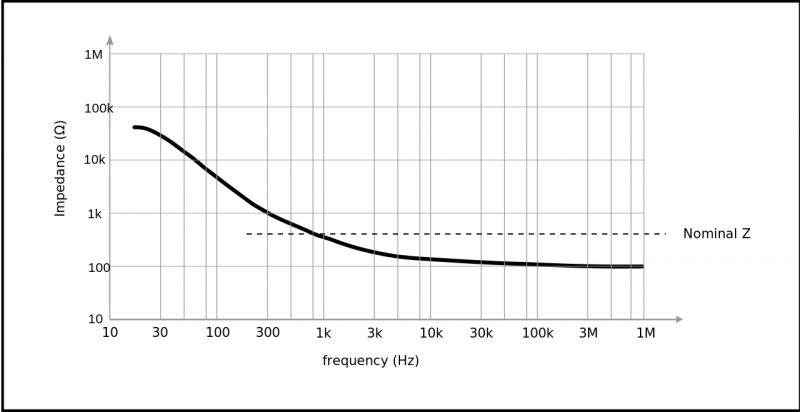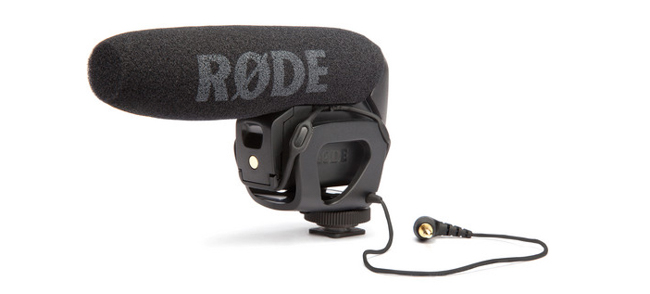
From the podcast that you listen to on Podbay to the music recorded by your favorite artist on Spotify, microphones play an essential role in our lives and audio can make or break your narrative project. If a video was terrible quality but with good audio, you could maybe struggle through it. On the flip side you could have the greatest video ever and if the audio is clipping, muffled, of just plain out of sync, it would be unwatchable.

[REWIND: iPhone 7 Plus VS Arri Alexa | Can An iPhone Keep Up With An $80,000 Professional Video Camera?]
When starting out, filmmakers tend to use onboard mics as they are already on your camera, and let’s be honest, free. Granted, the built-in microphone quality has improved in the last couple of years, but compared to a dedicated solution aren’t in the same solar system. The built-in mics tend to be so terrible that the chapter in the Filmmaker’s Handbook suggests to use the book itself to break them off so you’re not tempted to use them. So what to get?
When it comes to DSLR/mirrorless video the first mic that many would suggest would be the Rode VideoMic Pro as it’s a great all ’round shotgun mic that will excel in many situations. Each recording situation, however, can require a different kind of microphone, and unless you are a real audiophile you may not know what is the best for your situation, or why. Below are a few terms (under categories) worth becoming familiar with before purchasing a microphone.
Type of Microphone
Microphones capture the energy from the sound waves and in different ways are able to convert the sound into electrical energy. There are two main methods of doing this, either by using a condenser or a dynamic microphone.
Condenser
A condenser microphone uses two capacitors to convert sound waves into an electric signal. As a sound wave enters the microphone it causes the front capacitor to vibrate, moving it either closer or further to the back capacitor. This vibration causes a change in capacitance within the mic itself. With a mostly electric construction, condenser mics require power from an external source to capture the sound – AKA phantom power.
Condenser mics are generally more sensitive than dynamic mics, picking up high frequencies that dynamic mics cannot. All that extra sensitivity comes at a cost, however. Due to their relatively complex technology, condenser mics are less durable and more expensive than dynamic mics. That said, you’ll see Rode VideoMic Pros on cameras everywhere including on cameras in the midst of a ‘run ‘n gun’ session.
Recommended Microphones:

Dynamic
Inside every dynamic mic you’ll find a wire coil next to a magnet. When sound waves hit the coil, it vibrates creating an electrical current. Dynamic mics do not need phantom power like condenser mics.
Due to their simple design, dynamic mics can take much more abuse than other types of microphones, making them the recording tool of choice for musicians looking for longevity and durability. If you’re on the move a lot, these are good options.
Recommended Microphones:

Polar Pattern/Directionality
A microphone’s directionality describes how it picks up sound from its environment. Some can pick up sound from every direction simultaneously, while most other microphones are limited to a specific direction, which is something that can be taken advantage of depending on the situation.
- Cardioid
- A cardioid pattern or “heart-shaped” is commonly used to pick up vocals or speech. Mics with this directionality only “hear” sounds primarily from the front where the microphone is pointing, as well as a little from the sides. Cardioid mics are the most common mics used for recording music.
- Supercardioid
- The above-mentioned Rode VideoMic Pro is a Supercardioid mic. Supercardioid mics offer a narrower pickup than their cardioid brethren, allowing a greater rejection of ambient sound. Unlike a cardioid mic, supercardioid mics also have some pickup directly at the rear as shown in the diagram above. Supercardioid mics are most suitable for capturing single sound sources in loud environments and are resistant to feedback.
- Bi-directional
- Bi-directional microphones pick up sound from the front and back of in a figure-eight polar pattern. Popular for with podcasters, these mics upwards of $500 or more.
- Omnidirectional
- An omnidirectional microphone can pick up sounds equally from all directions around it, making it particularly useful for recording groups or crowds. They are commonly used for live studio performances where the goal is to recreate the sound of the room, but are not good for live use as they are very prone to feedback.
Frequency Response
Frequency response is essentially the range of frequencies a microphone is capable of detecting, typically 20hz to 20Khz. Just knowing the range won’t help you much though, what you really need to know is how responsive the mic is to specific frequencies. Think about what you will be recording before you pick a microphone. For example, a microphone that performs better at lower, like a dynamic mic, frequencies may lend itself to bass or drum recordings, etcetera…

Impedance
Measured in ohms (symbol: Ω), this refers to a microphone’s receptiveness to AC current or audio signal. Low impedance mics (600Ω or lower) are better at retaining audio quality when using cables longer than about 16 feet. A high impedance can often be a signal that the microphone’s other components are lower quality.
Maximum Sound Pressure Level
This is usually expressed in decibels (dBs) and is the maximum volume that the microphone can handle without distortion.
Attenuation Switch
Ever wonder what the switches on the back of Rode Videomic do? Theses switches on the back are called attenuation switches. An attenuation switch on a microphone reduces the output level of the mic by a certain amount, usually -10dB or -20dB. This causes the microphone to become between four and sixteen times quieter than normal.

Conclusion
Microphones aren’t sexy. Most of us don’t get the same rush buying a mic as we do a new camera or lens, but it is something that can shift your video to a new height and is of critical importance. As alluded to above, it is often the first differentiator of quality in any video.
The type of microphone is very dependent on the situation and style you want to create. Ask yourself, are you looking for a video podcast solution, live show, or narrative? Choose the equipment that gives you the best chance of producing your desired sound. Although not recommended for the highest quality or highest professional environments, picking a microphone that excels at recording in a number of different environments, like the Rode, will let you record entire sets with a single mic and is still leaps and bounds better than built-in mics. Remember: If you take your audio seriously, your audience will take your video seriously.







Get Connected!